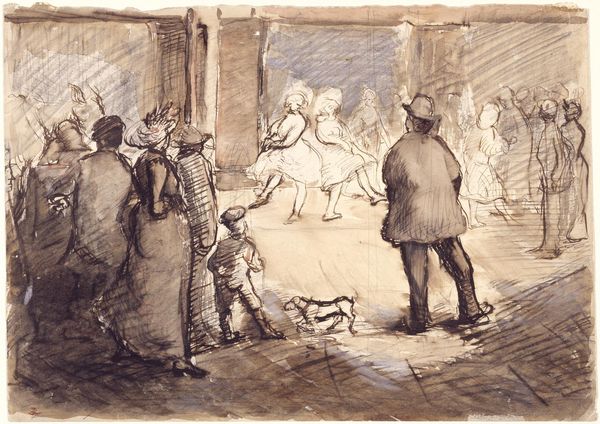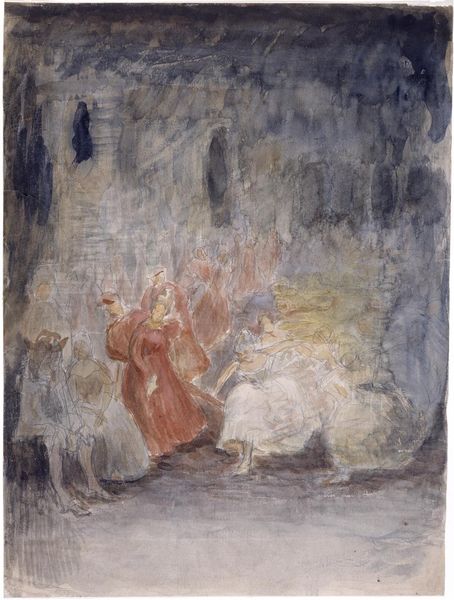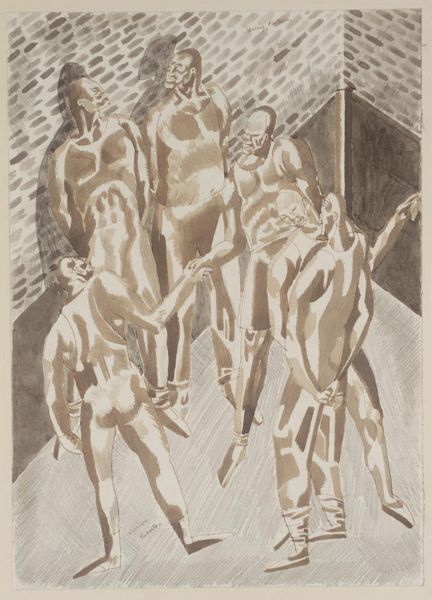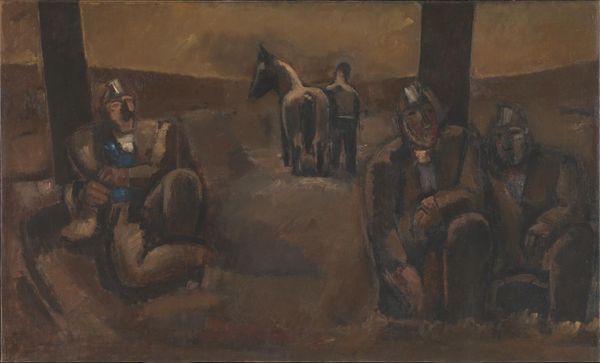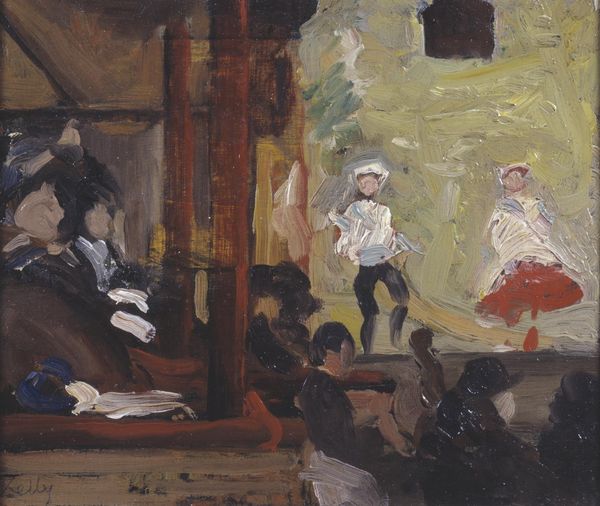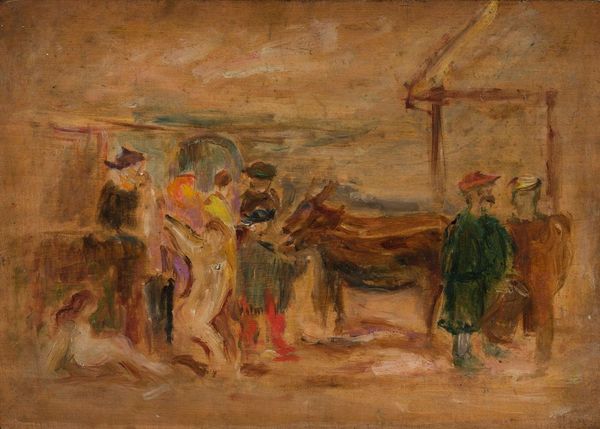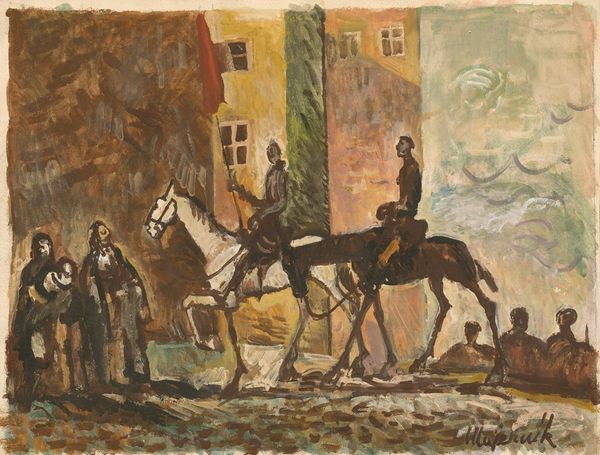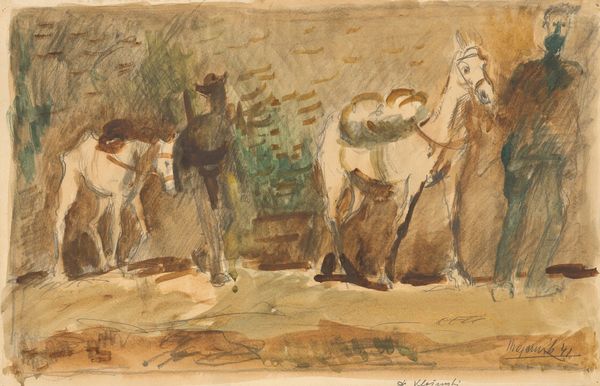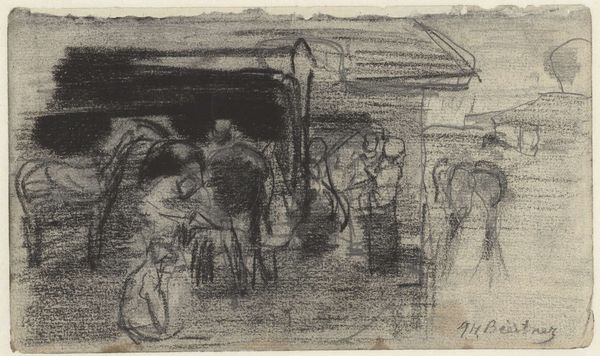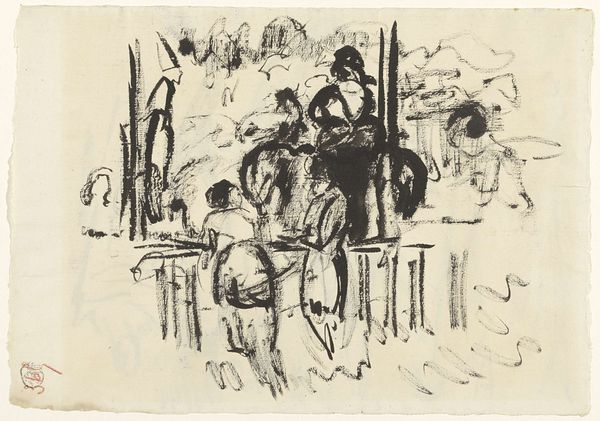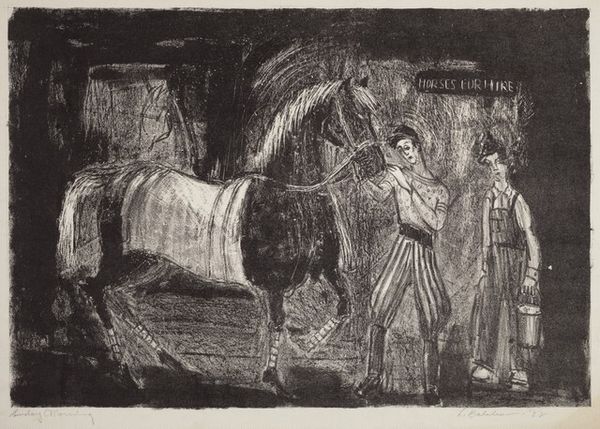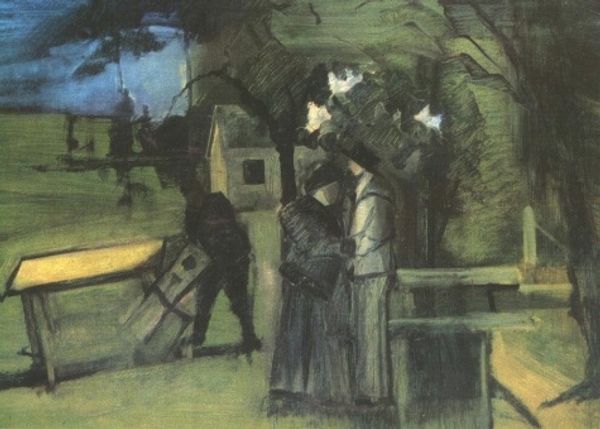
drawing, ink
#
portrait
#
drawing
#
narrative-art
#
impressionism
#
oil painting
#
ink
#
genre-painting
#
post-impressionism
Copyright: Public Domain: Artvee
Henri de Toulouse-Lautrec made this painting of performers in the wings of a circus, using oil on cardboard. Lautrec's work often took as its subject the entertainment industry of late 19th century Paris, from dance halls like the Moulin Rouge to the more humble setting of this circus. What is so striking about this particular picture is the sense of detachment of the figures in the scene. The harlequin, the horse, the ringmaster, and the ballerina seem isolated. We might ask, what is the relationship of the artist to his subject matter? In a society where social class dictated the conventions of artistic production, Lautrec broke boundaries by immersing himself in the lives of the working classes, even though he was himself from an aristocratic background. For those of us studying art, the social history of the Belle Epoque provides a crucial lens through which to understand the work of Lautrec. We can use sources like periodicals, posters, and photographs to understand the culture of which Lautrec was both a participant and an observer. In doing so, we can begin to appreciate how art is contingent on its social and institutional context.
Comments
No comments
Be the first to comment and join the conversation on the ultimate creative platform.
